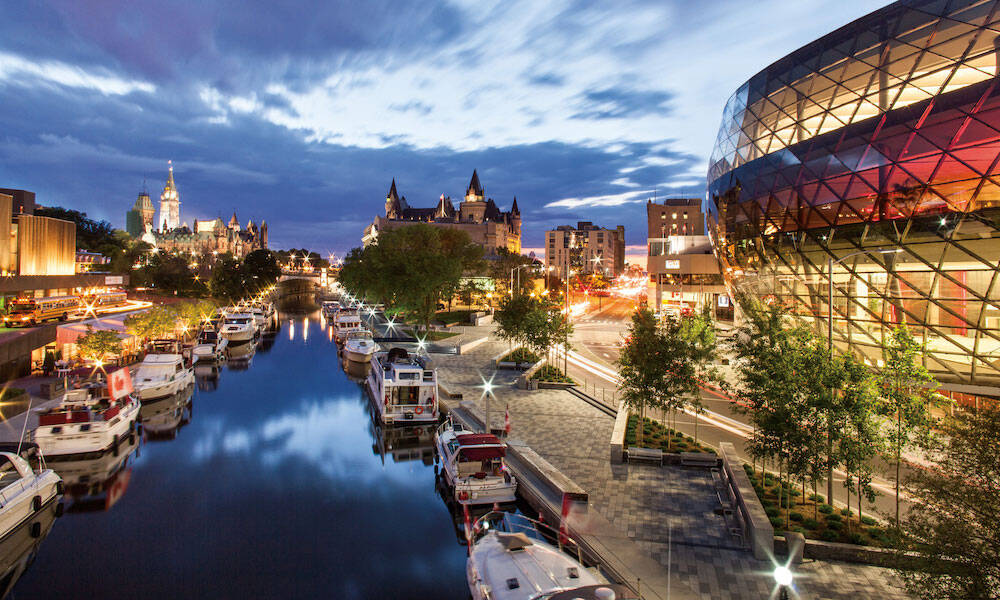
Emotionally Resonant Experiences Drive Engagement. Here’s How.
Executive Director of SSR Saima Hedrick shares how she partnered with Ottawa, Canada to create bold experiences for attendees.
New tools for attendee engagement (think: the latest event app or online portal) will always be of interest to meeting planners across the United States, Canada and beyond. However, according to a 2019 WARC study, real engagement starts with the feelings and emotions of your audience—from capturing their attention, to captivating and delighting them at every turn. This “warm and fuzzy” post-conference feeling emerges from positive experiences that have depth, substance and inspire creativity.
To ensure this overall positive experience was created for the Society for the Study of Reproduction’s annual conference, Executive Director Saima K. Hedrick, MPH, CAE, and her team believe in that age-old adage: It’s all about location, location, location. Here, Hedrick outlines the physical and emotional must-haves for a successful destination event, and explains why the Virginia-based SSR has returned again and again to Canada.
(This interview has been edited and condensed for clarity.)
Destination Canada: What is the main purpose of SSR’s annual meeting?
Saima Hedrick: Over a thousand of our members come to our annual conference for the interaction they get with other researchers. It’s a big priority for us to have a location that meets all of our needs and is one that’s appealing to our membership as a destination. As an organization, our greater mission is to advance the science of reproduction, fertility, and development for the benefit of humans and animals—through each conference, we hope to bring the organization closer to this goal.
DC: Why did you decide to hold your upcoming event in Ottawa?
SH: All of our Canadian meetings have been very highly-attended. We’ve held previous meetings in Vancouver, Québec City and Montréal. In fact, every single one of those meetings had record attendance and everybody was very pleased. So we’ve worked it into our rotation to go back to Canada every third or fourth year.
DC: Why do you think Canada has been such a popular destination for your members?
SH: Canada is very easy to get to for our international members. And Ottawa is a city that is very accessible. Accessibility is a big part of our decision-making when it comes to site selection. We’re also very big on LEED-certified facilities, which drew us to the Shaw Centre.
DC: What are some of the initiatives you’re spearheading to make this event special?
SH: One of the things that appealed to us about Ottawa was that they are very community-conscious where they donate excess food back to community food banks. And we were very excited because this year we’re trying to be much more conscious about our carbon footprint. We’re not going to be printing program books and we’re also going to ban single-use cups. The Ottawa Convention and Visitors Bureau has a lot of these initiatives already in place, and so it works really well for what we were trying to accomplish.
In addition, one of our members, Barbara Vanderhyden, is a very prominent researcher at Ottawa University, and she is very actively involved in community service. And so one thing we do with our conference every year is an outreach event aimed at educating middle and high school students about science because we really are seeing this decline in science literacy and we want to be able to give back to the community in that way.
DC: Research has shown that emotional connections can drive audience engagement and brand affinity. How does your community and environmental-friendly approach resonate with your attendees?
SH: When you are having an event, you want it to feel like this hot commodity so that everyone who attends wants to come back next year because they have such a great experience. I think exercising corporate responsibility leaves people feeling like, “OK, this is not just the typical meeting.” It shows we’re not just trying to get money out of you to pay for registration. We’re being altruistic in our decision-making while serving the purpose of the conference, which leaves people feeling good about being a part of it. So when you have the opportunity to work with a venue or a city that has the same sort of core values, it is magic.
DC: How does recreation factor into your destination planning?
SH: We really saw a change in the number of members wanting to go to a really appealing tourist spot. These are researchers. They work very, very hard and hardly ever get to take a good vacation because they’re conducting tests that take forever and working on very lengthy research projects. So oftentimes they’ll bring their families and want a place that has a lot to offer them. And so when we did the site visit in Ottawa, we were just floored at how that was such a big part of the ethos. Right by the Shaw Centre, there are bicycles that you can rent and explore. Just steps away there are shops and restaurants, Rideau Canal Cruises and the Canadian Museum of Nature—it’s a very family-friendly and fun kind of environment. And we like that.
This article is brought to you by Destination Canada’s Business Events team. Learn more about planning your next life science event in Canada, or reach out directly to receive our knowledge maps, designed to help you determine which life science destination is the best fit for your meeting.
(Destination Canada)





